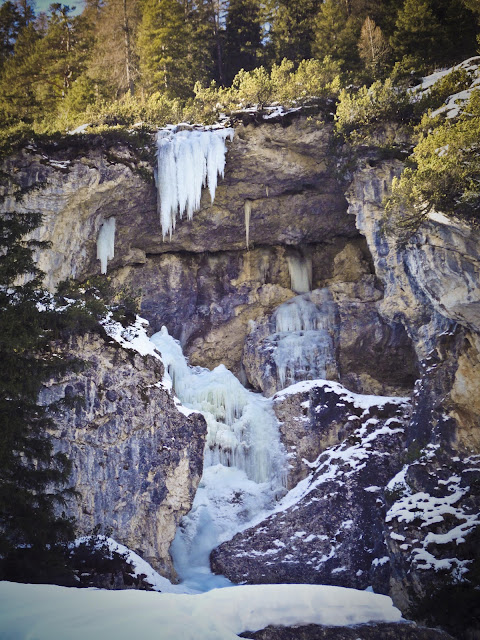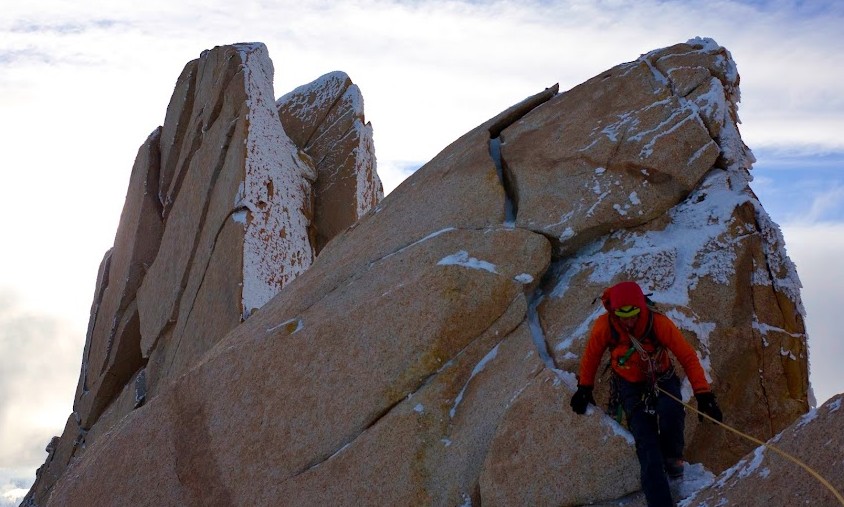
Our new line follows a series of ice runnels to the left
of the ‘Supa Dupa Couloir’ established in 2003 by Mike
‘Twid’ Turner, Stu McAleese and Olly Sanders.
Initial snow and ice pitches in the couloir led up to a
very steep corner with difficulties of AI5+ and M6+.
Jess was the ropegun on these pitches. At sunset we
chopped a ledge on a 60 degree ice slope and suffered
through a sitting bivy in the cold Alaskan night. We had
brought a small tent, but it did not fit our ledge and
collapsed on us during the night. Early the next day we
arrived at the col, which marks the end of the couloir.
From there Ben led several pure rock pitches on the
relatively warm south ridge. The first pitch off the col
was steep A3. He then climbed the 5.10R crux without
gloves and crampons, which was a full 60 meter pitch. We
reached the summit ridge that evening, but bivied only a
stones through from the actual summit on the east side
of the ridge. We once again settled in for a sitting
bivy on a chopped ice ledge. After a very uncomfortable
night we rappelled down a gap on the west face, which
took us to an easy snow ramp that lead directly to the
summit. The summit itself consisted of two large granite
blocks about five meters high, which from a distance
looked unclimbable. Fortunately there was an easy way up
on their back side. After a short brew stop, we then
faced an arduous descent down the north ridge where our
rappel lines got stuck several time, and we had lots of
exposed down climbing and also had to rappel off our
only two snowstakes. In the last rays of the sun we did
one final rappel off a spectre-hook, which was hammered
less than 3 cm into an icy crack, but even scarier it
was flexing under bodyweight. However, it got us over
the bergschrund with one meter of rope to spare and we
reached the safety of the flat glacier terrain. We
stumbled back into our base camp 70 hours after having
left it.
We jokingly named our new route the ‘Hypa Zypa Couloir’
in keeping with the name of the ‘Supa Dupa’. That way
the Super and Hyper couloirs of the Kichatnas are
located side by side unlike in the Alps. The overall
difficulty of our route is American commitment grade VI
corresponding to European ‘ED+’ with technical pitches
of AI5+, M6+, 5.10R, A3 and a vertical height of 3700
feet (ca. 1100 meters).





